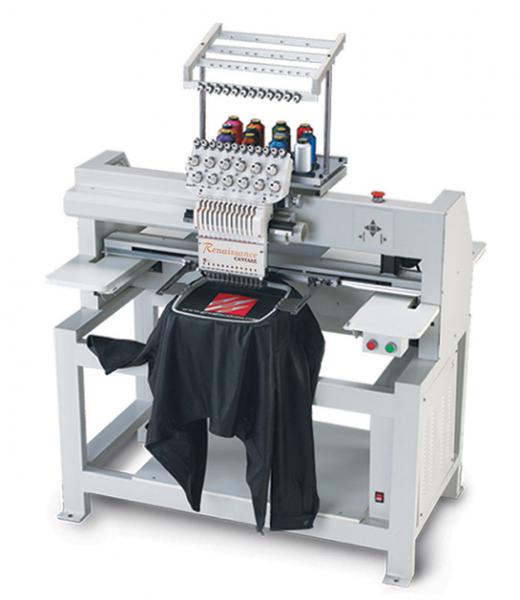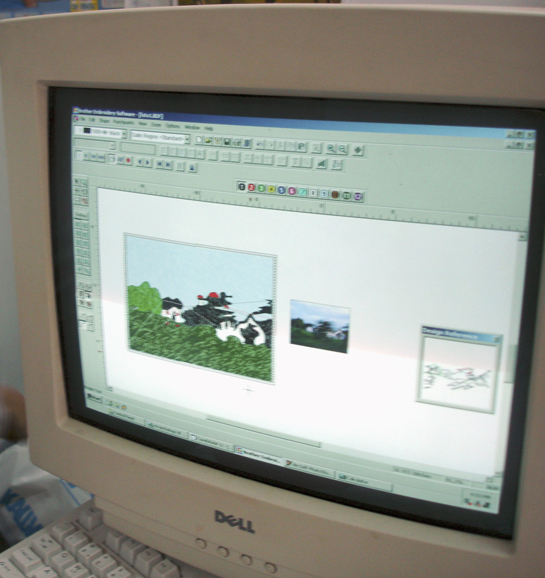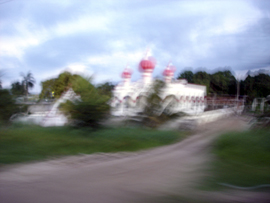Embroidery is a time-intensive practice using heavy thread and varying stitches to construct an image. The combination of photographic imagery and needlework can be a good way of making images for artists interested in using images and textiles. Photo-embroidered images can be sewn onto many types of fabric, for many applications – wall hangings, clothing, costumes, bedclothes, household goods, etc. Traditionally, women did embroidery work by hand and the craft is now often utilized by artists who consider the connotations of labor and women’s work when working with embroidery in a new context.
Egyptian born and Parisian trained, Ghada Amer traces photographs from sex industry magazines and hand embroiders them while leaving the ends of the threads hanging, alluding to the paint drips in abstract painting. Hand embroidered garments are time consuming and usually regarded as heirlooms. Amer calls attention to the tension between East and West as many third world countries, such as China or India, produce handmade garments for wealthier markets.

Commercially available embroidery machinery and software print digital imagery. The software programs recognize a digital image’s variation of line width and color in pixels. The sewing machine reads the software’s “translation” from how pixels form image fragments to how stitches of thread compose imagery. There are several brands of software programs designed for machine embroidery. Each usually involves a drawing program that recognizes an image file and an embroidery program that digitizes the file into a format that an embroidery machine can output as stitches.



Artist Toby Millman took the photograph, Hindu Temple, Paramaribo (left) in Paramaribo, Suriname. She brought the digital file to Prima Embroidery N.V., a company that embroiders logos. Millman considers their technician, Pamela Lie, to be a collaborator in the work. Lie “traced” the image in a vector-based program, before it could be sewn. The tracing involved collapsing details into large areas of color. The technician acted as interpreter, purposely omitting certain parts of the image, merging various tones and choosing to define select details. She decided how to translate blur and color. Moreover, the sewing machine, with its limited number of spools and predetermined palette, determined image color. The final embroidery (right) bears a resemblance to the original photograph, but has been altered through the technician’s rendering, the software and the machinery.